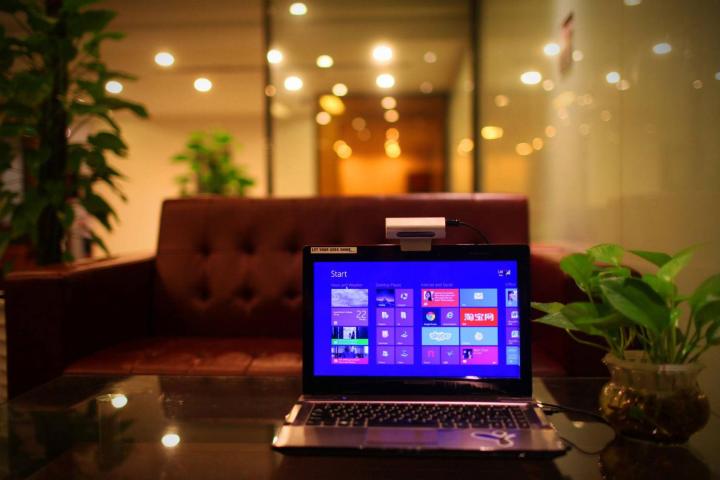
Is the computer mouse heading for extinction? With touchscreens becoming the input method of choice these days, all signs point to yes. And with more companies releasing alternative input devices, like motion control and eye tracking hardware, the need for a computer mouse is becoming less of a necessity. Yesterday, a company called Ractiv released its version the alternative mouse: the Haptix 3D multitouch sensor.

The team claims that using multitouch on a tablet can cause your neck to hurt from looking down, and using a touchscreen on your laptop can be tiring on the arms from constantly reaching out. They also pointed out that your hands would cover part of the screen in both cases. “3D sensing technology is incredibly cool, but it’s not going to replace multitouch or the mouse anytime soon simply because it faces problems such as imprecision and gorilla arm,” Lim said. With Haptix, however, users interact with their computers through 3D multitouch, which adds a layer of 3D sensing on top of a layer of multitouch. In their words, it’s like using multitouch and a mouse at the same time.

Ractiv touts the Haptix as being the “best of both worlds,” allowing for maximum productivity. With the Haptix, you can tap, pinch to zoom, or swipe to scroll. When your fingers are above the surface, you’ll see them appear on the screen, which makes it easy to know what you’re selecting when you tap the surface to click on a link.
But we had to wonder: Wouldn’t your hands get tired from having to hover over your keyboard the whole time? According to Ractiv, your hands are “well-rested,” but we can’t confirm this before we try it out for ourselves.
Is Haptix a mouse-killer? Ractiv believes so. The team say they haven’t used a mouse “in a while,” and haven’t missed it. Haptix even lets you define different functions for different fingers, so you can set your middle finger as the cursor, your index finger to left clicks, and your ring finger to right click, for example. Haptix works on Windows XP, Windows Vista, Windows 7 and 8, and Ubuntu (sorry, Mac-users).
Haptix is currently seeking funding on Kickstarter and, at the time of publication,had reached $44,427 of its $100,000 goal with 29 days left to go. A pledge of $65 or more will get you your own Haptix. Compared to the $80 Leap Motion Controller, and the $150 MYO Armband, the $65 Haptix is a steal. We’ll have to see if that’s true when we get some hands-on time with it ourselves. Stay tuned.


